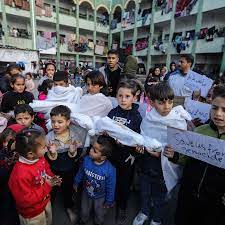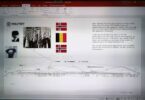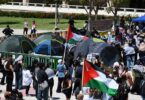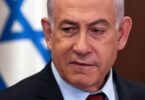Ghada Ageel
For many years, every time I travelled to Gaza to visit my family, I passed through the Rafah crossing, the border between the besieged Gaza Strip and Egypt. And every time I took a breath in the border city of Rafah, I was reminded of my sister Taghreed’s words: “I am inhaling the scent of the history of my land.” Her eyes would glow with pride every time she talked of Rafah, and I share the sentiment.
The history of this corridor spans thousands of years, a testament to the rich history of Palestine and its people. For millennia, Rafah has been a resting place and a trade hub for caravans from across Palestine travelling towards the Sinai Peninsula and onwards to Egypt and Africa. Today, a genocide is unfolding in this ancient, precious city. As I witness this genocide from afar and fear what the threatened Israeli invasion would mean for the hundreds of thousands of displaced Palestinians forced to take shelter there, I feel like I am one of those powerless souls who recognised what was happening in Srebrenia or the Warsaw Ghetto, tried to raise the alarm but couldn’t do anything to avert the tragedy as the world had already decided to turn a blind eye to the impending massacre of innocents.
Since the beginning of this latest war on Gaza, every new phase in the Israeli onslaught has inflicted more suffering, pain and death on the civilian population. Displaced many times over, those who are now in Rafah have nowhere else to go. The invasion of Rafah would thus be the last, and the most deadly phase of this genocide – the first genocide in human history that has been broadcast live to the world. Sadly, this is not the first time beautiful Rafah has become the background to crimes against humanity. The border city’s recent history is a wound kept open by constant violence. The majority of Rafah’s residents, like most cities in Gaza, are the descendants of those displaced during the 1948 Nakba while others are the survivors of a 1956 massacre and the many other Israeli aggressions that came after.
My 89-year-old aunt Rayya, a refugee from Barqa village, which was destroyed by Israel in 1948, has been witness to decades of massacres, violence and oppression in this city. In 1956, during the tripartite aggression involving Britain, France and Israel, also known as the Suez Crisis, Israel occupied the Gaza Strip for about four months, perpetrating horrifying massacres in both Khan Younis and Rafah.
On November 2, when the Israeli military occupied Khan Younis and ordered males aged 16 and older to come out and present themselves at points across the city, my aunt was there visiting family. Then a 22-year-old newlywed, she witnessed the Israeli military line those men and boys up against walls and massacre them over the course of two days. My aunt eventually decided to leave the family home with her sister’s family in search of safety. They walked to the beach in Khan Younis and sought refuge under the trees. They ate anything they could find and dug holes in the ground to sleep, find clean water and use as a toilet. Despite the surrounding danger and the continuous sound of bombardment, Rayya, fearing for the safety of her husband, made the difficult decision to continue her journey on to Rafah.
Upon her arrival, Rayya realised that there had been yet more executions across Rafah. She could not find her husband anywhere. For days, she grappled with the harrowing uncertainty of his fate. Fortunately, her husband had survived that particular wave of violence. He later died during the occupation of Gaza in 1967, killed by the Israeli army while travelling along the beach from Khan Younis to Rafah. After her husband’s murder, Rayya found herself alone, a single mother, tasked with raising five children in the hardship and destitution of the Rafah refugee camp. In the 1970s, she was forced to seek employment in Israel’s agriculture sector, labouring in the fields collecting tomatoes to provide for her family. During the first Intifada in 1987, Rayya lost an eye while trying to rescue her youngest son from the hands of Israeli soldiers. She was struck in the eye by the butt of a rifle while trying to prevent soldiers from taking her child.
At the beginning of the second Intifada in 2000, one of her grandchildren, 13-year-old Karam, was shot in the back of the head as he was running away from an Israeli army post after throwing stones at soldiers. The unconscious child was rushed to al-Shifa Hospital in Gaza City, but doctors said he had no possibility of survival beyond a few hours. Rayya and her daughter in law, Karam’s mother, were presented with an agonising choice: Stay at the hospital and accompany Karam in his final hours of life, or return to Rafah before checkpoints were closed to mourn his death at home with their loved ones. Uncertain whether they would be allowed to move between cities in the coming days, they eventually decided to go home without Karam’s body.
This is the moment for every member of the global civil society, everyone who believes in human rights, justice and freedom for all, to speak up against the deafening silence of their political leaders and take a stance for the long suffering Palestinian people. As the threat of a catastrophic Israeli invasion looms on the horizon in Rafah, we cannot continue to ignore the plight of Palestinian refugees, displaced many times over, sick, hungry and forced to resist a blatant ethnic cleansing campaign with nothing but their fragile bodies.
No one can claim ignorance about what’s happening today in Rafah, in Gaza, across Palestine. The truth is evident in the testimonies of the children living through the genocide, in the work of brave journalists on the ground documenting their own slaughter, in the carefully researched and sourced reports of experts, academics, human rights defenders and international institutions. Rafah is the final opportunity for the international community to come together for peace and dignity in Palestine. It’s time for Rafah to finally be truly safe and prosper. It is time for lifelong refugees like my aunt Rayya to find permanent safety and security. It is time for a ceasefire, and a free Palestine.
Aljazeera







